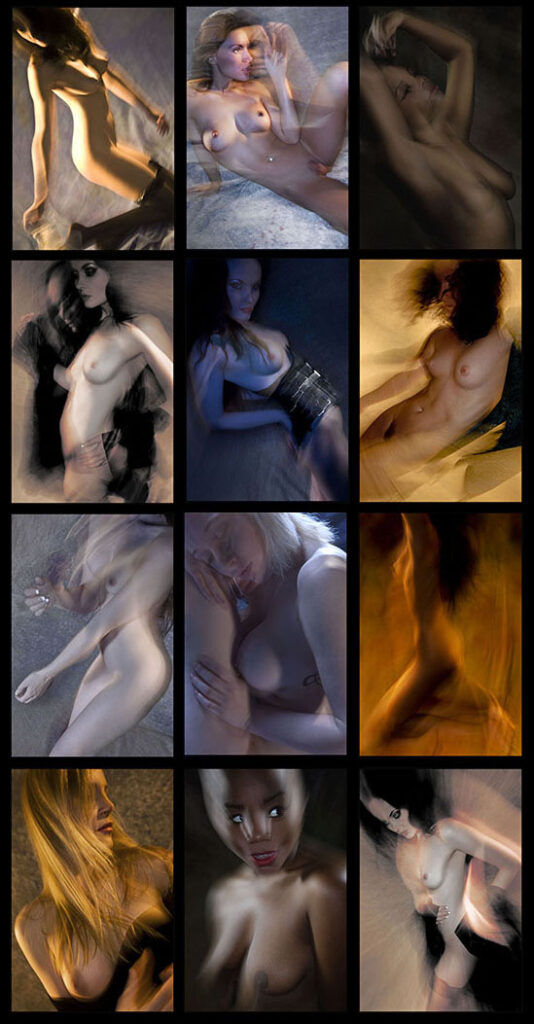Let’s Get Technical (strictly for photography nerds)
All my photography has been digital since 1998 and I retouch most of my work extensively; however, many of my Classic Still Lives were shot on 6x8cm roll-film, 4×5”, 5×7” or 10×8” sheet film – like for instance the still lives below – then scanned and retouched. This is why I like digital photography (and Photoshop) so much: When I was an apprentice (in Germany, in a previous life) I learnt to retouch transparencies.
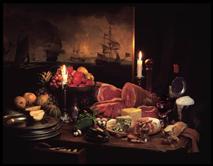
8×10″ transparency, Cambo camera, Schneider 305mm G-Claron lens, shot at f90
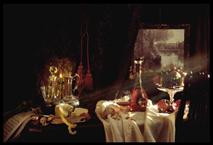
5×7″, Linhof Technika, Schneider 210mm G-Claron lens, shot at f64
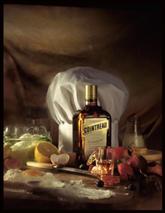
4×5″, Cambo camera, Schneider 210mm G-Claron lens, shot at f22
But one day – in the 1980s – I received a call from an ad-agency production manager … “what the f*** are you doing with my transparencies?” Oh dear, one of those new-fangled electronic scanners had shown up the ink & brush strokes … and it did not look pretty. Unfortunately, from then on, no more retouching on tranys, and I really missed it. But when I did my first pictures on a digital camera (in 1998, with a Leaf three-shot 4mp back on a Sinar P2 view camera; the whole outfit cost me about $90,000 … for FOUR mega pixels!@#$%&*) I realized I could retouch my pictures again, and I was sold on digital.
More samples from the olden (film-) days are my ancient b&w shots
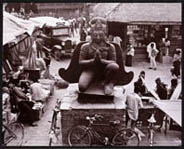
Nikon F with 35mm f/1.4 lens, Kodak Tri-x film
… which I used to shoot first with Nikon, then with Leica and Hasselblad, on Kodak Tri-x, developed in D76 and printed on AGFA Record-Rapid paper, for its nice, warm tones.
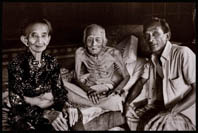
 Leica M4 with 35mm Summilux f/1.4 lens, Kodak Tri-x
Leica M4 with 35mm Summilux f/1.4 lens, Kodak Tri-x
Still in the old film days … in the mid 1990s I got disillusioned with my Hasselbald. By then I had traded my trusty 500CM for a 2000FC, which was a dog of a camera; great lenses though … I’m talking about the 110mm f/2 as well as the 350mm f/4 – with a 2x converter I had a 700mm f/8.
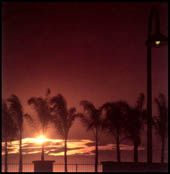
Hasselblad 2000FC, 350mm f/4 lens, 2x converter = 700mm f/8
So I traded up from the Hasselblad to the (soon to be discontinued) Fuji GX680 … my last film camera. What a beauty that was! With front movements (like my TSE lenses now), it shot 6x8cm frames on roll film … the camera had a great feature: Aperture priority Auto Exposure, with the shutter speed adjusted automatically. This was especially good in situations where the light changes in an instant and there is no time to use a light meter (like with my old Hasselblad). The exposure was spot on … even in most challenging situations, like helicopter photography. Also great for still lives, and especially food shots – where you have to be quick – the motorised roll-film back came into its own.
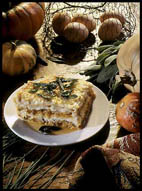
When digital came in I was a bold, early adaptor… indeed, in those early days there were many who thought digital would never work in professional photography … film and a good scanner, they said, would always be better.
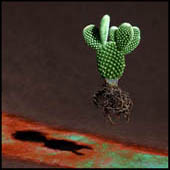
My first digital camera was a Sinar, with the DCB II, 4mp 24x24mm ‘digital camera back’. The set-up was a three-shot affair, with 3 different exposures, each using a Red, Green and Blue filter to arrive at a composit RGB file. Nevertheless, I soon traded up to the 6mp single-shot version with a 24x36mm chip. The year is 1998; my initial investment in digital technology was $150,000 (this was in the days when $150k was a lot of money) … this included the Sinar camera where the 4mp digital camera back cost $40,000; all up the camera – including the rock-solid studio stand – cost $90,000
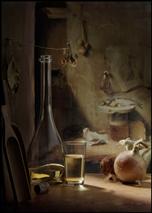
Things really changed for me when Canon brought out the first full-frame digital SLR, the 11 mega pixel Canon EOS 1 Ds, in 2002 … now I shoot with the 21mp version, all of my people pictures, but also my still life shots. For the still lives I use two TSE (tilt/shift) lenses, 45mm and 90mm; because there is one thing that’s difficult to achieve in Photoshop … depth of field. Anyway, the shift function of the lenses is not that valuable anymore – it is easy to correct perspective in PS – but depth of field is a different story …
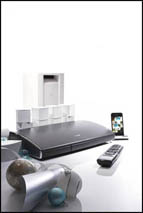
… as is evident in my jewellery shots, which are shot with the 100mm Macro lens and the 90mm TSE lens. Don’t get fooled here … these pictures are quite complicated; they are put together from about a dozen or two (or indeed three) individual shots. The Macro lens does not have much depth of field at all … and the depth in the image is achieved the hard way: By pulling the jewellery into focus mm by mm – you need an attachment to move the camera forward mm by mm, you don’t touch the focus ring on the lens – as you shoot a bunch of frames and comp them together. There’s roughly three hours photography in these pictures, and about two to three days retouching in each of them.
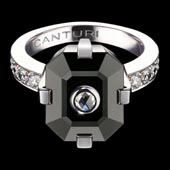
Canon EOS 1 Ds with 100mm Macro lens
Here’s an example for controlling perspective in Photoshop … just about all of my shots – but especially the architectural images – have their perspective controlled.
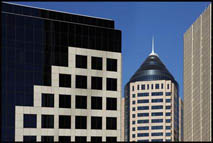
Canon EOS 1 Ds with 70-200mm Zoom lens
For my Photoart work my normal lenses are the classic combo of 24-70mm + 70-200mm and for longer-lens work I use the 2x converter, as in this photo of the moon rising over the Opera House … it’s shot at 2x 200mm = 400mm; btw, this phenomenon – where the full moon rises at dusk in that very spot – occurs just once a year. It took me three years to get this shot … I once saw it happening when I crossed the Harbour Bridge, I came back the next evening to shoot it, but the moon rose an hour later and it was too dark. I then researched the astronomical aspect of the scene and planned to shoot it the next year. But guess what … it was cloudy. I got the shot the year after (yeah, I know, I could’ve done it all in Photoshop … tell someone who doesn’t know!)
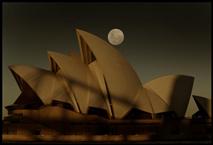
One word to the smart-alecs who thought I should’ve just dropped the moon into that shot and be done with it. There is a problem with digital: Anything is possible, and many people do just that: They combine unrelated items into the one shot. I don’t do that, I like to preserve an aura of authenticity in my pictures … I have said before that I retouch and manipulate my shots a lot, however, I do not like to make composites where the different element stem from different scenes. The furthest I go with manipulation is that I may pull together in the one shot items that occurred with a certain time-delay, say a few minutes, or even an hour. Take this shot …
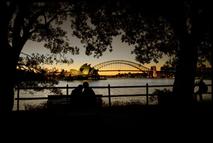
Canon EOS 1 Ds with 24-70mm Zoom lens
… I knew exactly what I wanted, namely that post-sunset glow. But that light occurs about 1/2 hour after the sunset, and by that time the water in the foreground was black and the lovers on the bench seat had left. So the picture is a composite of 4 shots, taken with the camera mounted on a tripod, over a period of an hour (the fellow on the right, sitting on the fence with his video camera, is the 4th shot).
For portraits I like to use the 50mm f1.2 – I really like this lens, the low-light ability – of course – but the shallow focus too; and – surprise – the lens I had before the f/1.2 was the f/1.4 (not a pro-L lens) and, guess what, that lens is brilliant too, at a sixth of the cost (honestly, sometimes I think I can’t tell the difference).
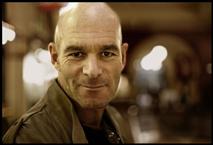
Canon EOS 1 Ds with 50mm f/1.2 lens
The last lens to round off my collection is the 15mm fish-eye … all my Gay & Lesbian Mardi Gras shots are done with it.
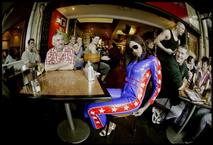
For jobs that require higher resolution I hire the Hasselblad with a high-res digital back; this makes a job appr. AU$1,250 per day more expensive.
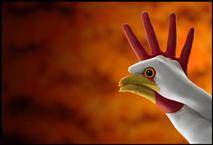
My editing and retouching is done on a MacBook Pro, with a 30” monitor and a Wacom tablet. I use two 2tb Western Digital drives for Time Machine; a word on Time Machine: Don’t rely on it for a back-up, it does mal-function at times (in my experience); but it’s great to recover a file when you’ve made a mistake – say where you saved a file by accident as a reduced-size jpeg for emailing, but didn’t keep the original psd file – with TM you can go back an hour and recover it.
For storage I used to use a 5tb Silicon Memory Raid array and later on a 20tb LaCie Big RAID drive, as well as the two 2tb Western Digital hard-drives; one of the WDs kept in a separate room and they are swapped over every couple of days, after every bit of work I have completed (ever heard a story where a place was broken into and not only the computer was stolen, but the back-up drives too?! I’ve heard three. Never keep all your gear in close vicinity). Then I have another little LaCie 5tb d2 Quadra in a small Pelican case, which is stored off-site. I update it after every shoot … this way all my data is also on a drive away from my premises, and safe in case of fire.
I am a world champion at backing up! I am one of the many photographers who have been burnt – I once ran a Norton Utilities over a freshly upgraded Mac OS 9 … with disastrous results; both internal hard drives were fried, never to be recovered. I lost a few single shots and one folder with a whole series of pictures; most of my work was backed up on CDs and DVDs … but guess what, you can’t trust them: Twice now I couldn’t open an old back-up CD.
I stopped using desktop computers, the MacBook Pro is adequate … this way I have the same computer on location as in the studio. I shoot raw only. The combo of Bridge and Photoshop works for me for my Photoart work. For jobs I shoot into Capture One.
Often when I go out, and always when I see clients, I take with me my trusty old MacBook Air 64 gb (these days [2019] a MacBook) – the very first Solid State Memory computer that came out. I’ve been saying for years now: in a year or two there won’t be any more mechanical (spinning) hard drives in computers but SSM.
Incidentally, I resisted the MacBook Air for a long time … I kept writing to Apple about my preference for my old 12″ PowerBook G4. I have two of them and they still are in use (the older one hails back to 2002); my point was that I never really liked the wide cinema screen format, the squarer 12″ screen is better suited to photography, since – unlike videographers – we shoot vertical (portrait) as well as horizontal (landscape). In the meantime I have gotten used to the cinema screen-format (probably because I indeed now watch movies on my computer); nevertheless, for photography I would prefer a computer with a close-to-square screen. Anyway, I now really like the ‘Air’ format … slim, light – with the external optical drive (my guess is we’ll soon see this in the ‘Pro’ series too)(Update: Told ya so!)
My lighting used to be ProFoto 5 – I had two 4,800 – but over the years I switched to Visatec monoblocks. I have a Solo 400 B, an 800, three 1600 and three 3200 (they have a truly stupid naming convention, the 3200 for instance is a 1,200 jules unit. Go figure!) with a bunch of softboxes, barndoors and honeycomb grids. In the studio I use my trusted old Foba rods & joints combitube system … very handy; my tripods and heads are Manfrotto, I particularly like the little geared 410 head for my still life shoots.
All right, that’s my commercial work. But sometimes I love to escape, to leave this planet and visit that other world – that parallel universe – where I shoot nudes.
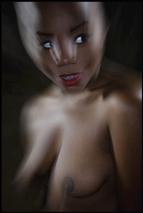
 Canon EOS 1 Ds with 24-70mm Zoom lens
Canon EOS 1 Ds with 24-70mm Zoom lens
It is an escape alright. How then are my erotic photoart shots done? I say about the Alchemy of my Erotic Photoart:
“What is the difference between ‘Fine Art Nude Photography’ (mostly black & white, where someone waxes on lyrical about ‘celebrating the female form’) and my Erotic Photoart? For me it’s this: The former often is staged, static and stationery.
“In my photographs there is movement … by the model, my camera, the lights; when I shoot, I’m somewhat out of control. You see, I’ve been an ad shooter for 40 years. Always in control; always restrained. But now the chains are off. When I shoot my nudes, I’m free. I take chances. I allow for the unexpected to happen, the uncontrollable; and for 10 shots that I may consider, I will shoot 100 frames. In the end I’ll use just 1, which I then will retouch, polish, enhance. I’ll find a frame I like (but if I don’t, doesn’t matter; I’ll move on to the next shot) and when I bring the raw shot alive in the editing, I turn it into Photoart … with love, care, dedication. I like to think my best shots are mysterious, indeed art.
“I love that process: not to have to worry about the shot while I shoot, but to feel the woman in front of me: her moves, her features and her personality … it’s the sublime experience of photographer & model in non-physical union; where I endeavour to use my intuition – and my professional expertise – to enrich your life as I bring her beauty to you as well as an appreciation of art.”
So there you have it: Out of control; movement … by the model, my camera, the lights. Mostly I shoot with a long exposure time (about ¼ sec), expose with tungsten lights – there is this cute little light source I got the other day, little battery run LED lights (I’ve got four of them) designed to be used as video lights … and give the picture its sharp center with an on-camera flash, a Canon Speedlight 580EX with a ring flash attachment; great fun … I shoot my black and white close-ups with the 50mm f1.2 wide open, to get that shallow depth of field.
Sooo much fun.
That’s all, folks.
Now go forth and practice.
